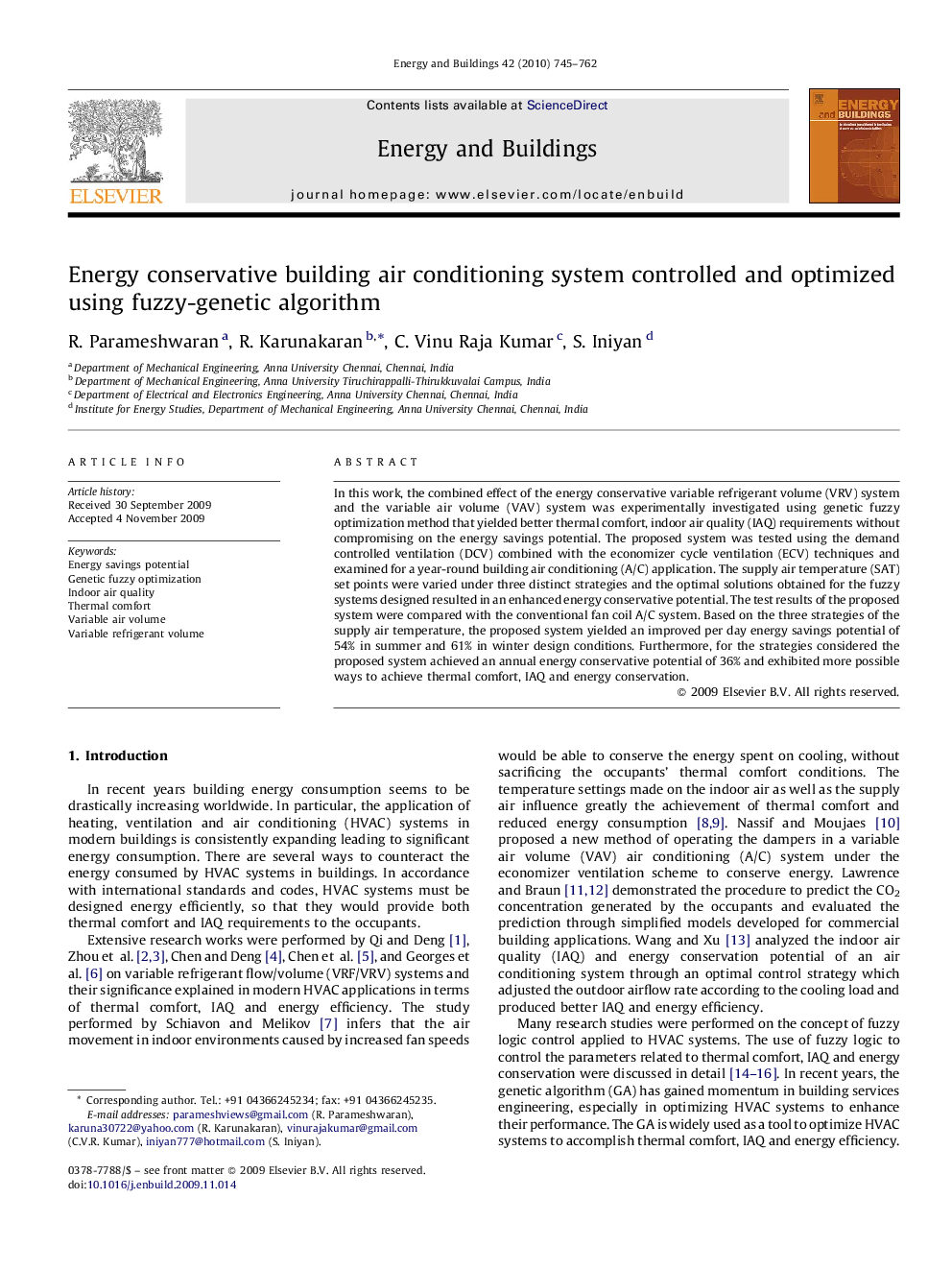| Article ID | Journal | Published Year | Pages | File Type |
|---|---|---|---|---|
| 265007 | Energy and Buildings | 2010 | 18 Pages |
In this work, the combined effect of the energy conservative variable refrigerant volume (VRV) system and the variable air volume (VAV) system was experimentally investigated using genetic fuzzy optimization method that yielded better thermal comfort, indoor air quality (IAQ) requirements without compromising on the energy savings potential. The proposed system was tested using the demand controlled ventilation (DCV) combined with the economizer cycle ventilation (ECV) techniques and examined for a year-round building air conditioning (A/C) application. The supply air temperature (SAT) set points were varied under three distinct strategies and the optimal solutions obtained for the fuzzy systems designed resulted in an enhanced energy conservative potential. The test results of the proposed system were compared with the conventional fan coil A/C system. Based on the three strategies of the supply air temperature, the proposed system yielded an improved per day energy savings potential of 54% in summer and 61% in winter design conditions. Furthermore, for the strategies considered the proposed system achieved an annual energy conservative potential of 36% and exhibited more possible ways to achieve thermal comfort, IAQ and energy conservation.
